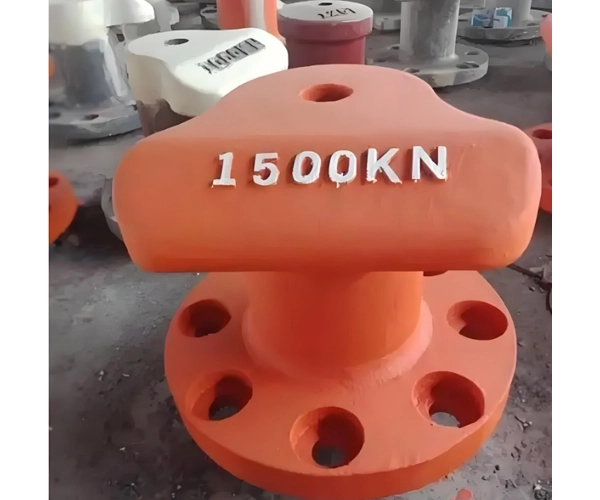If you've ever stood by the water watching ships come and go, you might've heard the words "dock" and "wharf" used almost interchangeably. But in maritime terminology, these two terms don't mean the same thing—though they're closely related.

So, what's the difference between a dock and a wharf? And where does something like a wharf gangway fit into the picture?
Let's untangle the nautical lingo once and for all.
A dock refers to a water-based space or enclosed area where ships are brought in to load, unload, or undergo repairs. The term can refer to both:
The water space where a vessel is moored, and
The structure around it (though this is where confusion often starts).
There are different types of bollard docks:
Wet docks: Where water remains and ships float at all times (usually found in harbors or ports).
Dry docks: These are drained of water so that ships can be repaired below the waterline.
A place where ships can berth
May include piers, platforms, or dock walls
Sometimes enclosed or gated for tidal control
Loading/unloading cargo or passengers
Ship maintenance and inspection
Long-term vessel mooring
A wharf is a structure built alongside or projecting from the shoreline, providing ships a place to dock and load or unload goods and people.
Think of it as the land-based platform that surrounds or borders the docked ship. It’s usually constructed of concrete, wood, or steel.
Typically built along the shore
May have multiple berths
Usually includes cranes, warehouses, and wharf gangways for crew and passenger access
Cargo handling and shipping logistics
Ferry terminals and cruise ports
Commercial marine operations
You can't talk about wharves without mentioning the wharf gangway—a key piece of equipment used to connect the ship to the wharf for safe boarding and disembarking.
A wharf gangway is a movable bridge or ramp that allows passengers and crew to walk from the vessel to the shore and vice versa. These can be:
Manual or motorized
Telescoping or fixed-length
Equipped with safety rails and anti-slip surfaces
Whether at a ferry terminal or a cargo port, wharf gangways are essential for both safety and efficiency.
| Feature | Dock | Wharf |
What it refers to | A water area or berth where ships stop | A structure built on land for ship access |
Location | In or over the water | Along the shoreline |
Purpose | Mooring, loading/unloading, repair | Loading/unloading, storing cargo, passenger access |
Includes gangways? | Not usually | Yes—wharf gangways connect ship to land |
Structure | May be enclosed or open | Typically long, linear platforms |
In simple terms:
Ships dock at the wharf.
The dock is the space, the wharf is the structure.
Just like docks, there are different types of wharves—each with specific functions:
Used in shipping ports to load and unload containers or bulk goods. Equipped with cranes, forklifts, and wharf gangways.
Common at cruise terminals or ferry ports. Includes wide gangways for easy foot traffic.
Often part of a shipyard or oil/gas terminal, where large tankers or barges tie up for fueling, repairs, or supply loading.
Let's say you're on a cruise ship arriving at a port city.
The wharf is the concrete platform with customs officers, vendors, and signs welcoming you to the destination.
The dock is the space in the water where your ship is moored.
The wharf gangway is the ramp you walk across to go from the ship to the shore.
All three work together—but they each serve a different function.
Understanding docks and wharves also means being familiar with these related structures:
Pier: A structure extending over the water, often supported by pillars. Can serve similar functions as a wharf.
Jetty: Built to protect the coastline or harbor from waves; not usually used for docking.
Berth: The specific spot where a ship ties up along a dock or wharf.
Slip: A narrow docking space between piers where vessels are stored.
So, what's the takeaway?
A dock is the water area where the ship is anchored or moored.
A wharf is the land-based platform next to the ship.
A wharf gangway is the bridge that connects ship and shore.
While the terms may be used loosely in everyday speech, understanding their technical differences helps when dealing with ports, shipping logistics, or marine engineering. Whether you're boarding a cruise ship or unloading cargo in a commercial harbor, now you know exactly where you're standing—and walking!